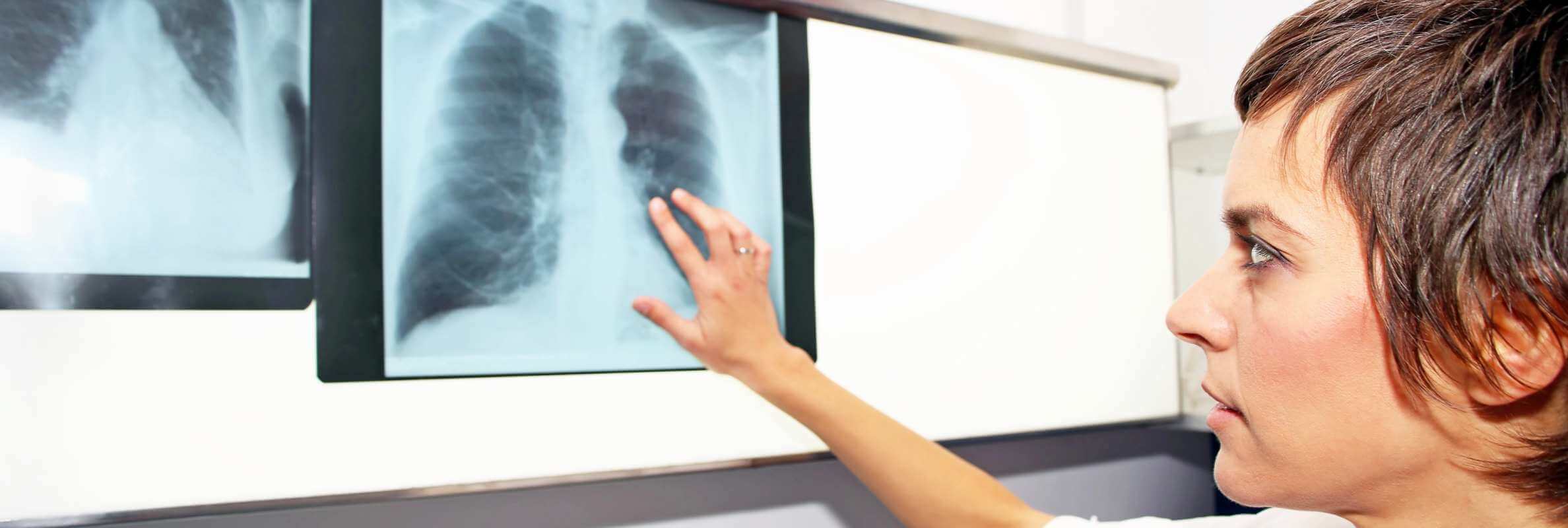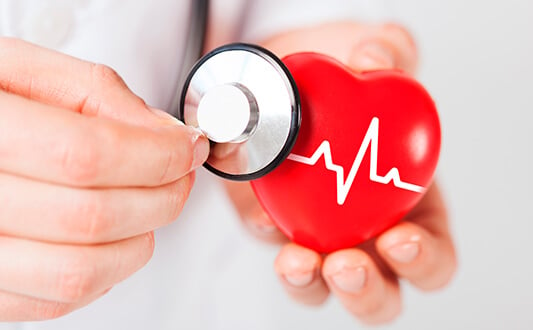The medical term, "pulmonary hypertension" comprises of an increasing pressure in the lung vasculature or pulmonary circuit. This pathological process is peculiar to the progressing increase of vascular resistance. These changes can often lead to failure of the right ventricular and consequently the untimely death of a patient.
Pulmonary hypertension responds poorly to treatment and thus, the prospect of a fatality remains high. However, in some developed stated there has been a decrease in deaths relating to pulmonary hypertension.
Content
- Causes of pulmonary hypertension
- Symptoms of pulmonary hypertension
- Diagnostics of pulmonary hypertension
- Treatment of pulmonary hypertension abroad
- Innovative treatment schemes of pulmonary hypertension (PH)
- Prognosis for PH
- Leading hospitals and costs of treatment
Causes of pulmonary hypertension
Pulmonary hypertension progresses through various means and has many origins such as:
- Left heart damage arises from the systolic, diastolic dysfunction of the left ventricle or in the case of affected heart valves in the left heart.
- Respiratory system diseases that affect the breathing like chronic bronchitis, occupational lung diseases such as pneumoconiosis, nocturnal breathing stops, defects in the development of the lungs, prolonged stays in high altitude conditions can also cause pulmonary hypertension.
- PATE (pulmonary artery thromboembolism) mostly arises as a consequence of the thrombophlebitis. If a thrombus that enters the pulmonary artery is small, it does not obstruct its lumen completely and does not lead to the patient’s death. But the vessels lumen narrows, which leads to increased pressure.
- Other illnesses. Pulmonary hypertension is often associated with HIV infection, sickle-cell anaemia, Beta thalassemia, systemic connective tissue diseases (rheumatic pathologies), potent hypertension, and congenital heart defects.
- Hereditary form of pulmonary hypertension is associated with mutations of some genes.
- Toxins. Constant impact of toxic chemicals, including certain medicines leads to an increased blood pressure in the lesser circulation.
Risk factors of PH are:
- Obesity
- Pregnancy
- Drug addiction
- HIV infection
- Liver disease
- Pathology of the thyroid gland
- Hypertonic disease
Generally, pulmonary hypertension arises due to a number of reasons. It’s next to impossible to identify just a single cause of pulmonary hypertension in a certain patient.
Symptoms of pulmonary hypertension
Previously, pulmonary hypertension was considered to be a rare disease. But improved diagnostics techniques have made its common incidence more clearer to diagnose. Normally, PH is either asymptomatic or it is disguised by clinical signs of the underlying illness.
The condition is detected in:
- 80% of patients that suffer from systemic connective tissue diseases
- 30% of patients that have sickle-cell anaemia
- 4% of patients that have pulmonary artery thromboembolic in their medical history
- 5 times more often for portal hypertension sufferers than the rest of the population
- 10 times more often among HIV sufferers than the rest of the population
Pulmonary hypertension is difficult to identify when relying only on symptoms as they are not specific even at the advanced stages:
- Shortness of breath
- Cough
- Weakness
- Pain in the chest
- Swelling on the legs
- Low tolerance to physical activity
Diagnostics of pulmonary hypertension
The following functional techniques suspect pulmonary hypertension when combined with the clinical picture and the rest of the diagnostics methods:
- A six-minute walk test
- Cardiopulmonary exercise test
- Treadmill test
Radiography is a survey chest X-ray revealing a change in the vascular pattern of the lungs and the contours of the heart.
ECG aims to detect hypertrophy of the right heart, which comes as a result of pulmonary hypertension. ECG also detects right atrium expansion, the deviation of the electric axis of the heart to the right and signs of right ventricular failure at the advanced stages.
Doppler velocimetry is an ultrasound technique that evaluates the speed of the blood flow in the vessels and measures the pulmonary blood pressure level.Non-invasiveness is among its advantages, but the disadvantage is that a diagnosis is not always clear.
Cardiac catheterization of the pulmonary artery is an invasive test meaning a catheter is put into the pulmonary artery to measure the blood pressure in it. This procedure is used for patients who have an unfavourable prognosis.
If a thromboembolic origin of pulmonary hypertension is suspected they also do:
- Radionuclide ventilation/perfusion lung scan or CT if no equipment allows the procedure
- Pulmonary angiography is also an invasive test presupposing an X-ray after the contrasting agent is administered into the vessels
Acute vasoreactive test is used to assess the body’s reaction on the short action vasopressors injection (vasodilators). Mostly, this test is used for patients with hypertension of an unclear origin to identify therapeutic tactics and the prognosis of the illness.
Treatment of pulmonary hypertension abroad
Pulmonary hypertension is a secondary syndrome in most cases that arise as a consequence of respiratory, cardio-vascular and some other pathologies. Thus, it is vital to cure the underlying disease.
PH itself is treated with the help of medication:
Calcium channel inhibitors are first-line medicines that is administered life-long, but only if the vasoreactive test was positive (about 15% of patients).Inhibitors expand arteries and lower the vascular resistance. 50% of patients were observed to have a considerable good hemodynamic effect thanks to the calcium channel inhibitors.
Prostanoids are getting all more important for the PH drug therapy if the poor response to the calcium channel inhibitors by patients are taken into account. Prostanoids are prescribed if calcium inhibitors are ineffective or a negative result is reflected in the vasoreactive test. Their administration is obligatory if pulmonary hypertension is peculiar with the severe course.
All other medicines that can be prescribed in different clinical cases are:
- Antagonists of endothelin receptors
- PDE-5 inhibitors
- Anticoagulants
Surgical treatment is used when drug therapy doesn’t bring any positive results.
- Atrial septostomy is when a surgeon makes a hole between the right and left atrium and part of the blood moves to the left making it easier for the right heart. Surgery doesn’t cure pulmonary hypertension but lowers the consequences for the heart.
- Pulmonary thromboendarterectomy is the operation performed if there are central thrombi (up to the segmental level) in the pulmonary arteries, with vessel obstruction over 50% (according to the arteriography). Thromboendarterectomy is performed in patients whose anticoagulant treatment did not lead to thrombus dissolution within 3 months.
- Heart-lungs complex implantation is performed if there is a negative prognosis and poor response to the drug therapy.
Innovative treatment schemes of pulmonary hypertension (PH)
New ways of pulmonary hypertension treatment are constantly being invented and some of them are already available in German hospitals.
Stem cells treatment is a very promising area of PH therapy having the restricted effective results. The patient’s own stem cells from the bone marrow, blood and fat tissues are obtained. The cells are cultivated and then injected straight into the pulmonary arteries. The positive effect is achieved as a result of antiproliferative action, arteries expansion and neoangiogenesis which is the formation of new vessel). Preliminary tests results point at the improved patient’s life quality, less symptoms manifested and a better tolerance to physical exercise within 6 months after a course of therapy.
New schemes of drug therapy are continuously tried and tested at German university hospitals and European hospitals. They apply combinations of different medicine groups to achieve the best possible therapeutic effect:
- Pyruvate dehydrogenase kinase inhibitors
- Apoptotic protein survivin
- Inhibitors of vascular endothelial growth factors receptors
- Elastase inhibitors
- Angiopoietin-1 inhibitors
Denervation of the pulmonary artery is a new surgical method of treatment. Data on the clinical effectiveness is contradictory. Denervation of sympathetic nerve fibres is performed using radio frequency catheter ablation. Intravascular intervention does not require open access to the organs of the chest. Arteries expand tonic effect of sympathetic nerve fibres on the vessels is weakened, and pulmonary hypertension decreases.
Gene therapy is an experimental method of treatment. The virus carrying the SERCA2a gene is built into the cells of the patient. As a result, development of an enzyme responsible for the admission of calcium into the sarcoplasmic reticulum of cells starts. This leads to a steady expansion of blood vessels and a decreased blood pressure in the pulmonary arteries.
Prognosis for PH
Pulmonary hypertension prognosis mainly depends on the concomitant diseases and the quality of the treatment provided. In general, it is unfavourable. Mortality within the first year after diagnosis is 15%.
Unfavourable prognostic factors are:
- 3-4 functional class of pulmonary hypertension
- Low tolerance to physical activity
- High pressure in the right atrium
- Right ventricular dysfunction and right ventricular heart failure
- High level of natriuretic brain peptide
- Systemic scleroderma
- Thromboembolic origin of pulmonary hypertension
Favourable prognostic sign is a positive response to the vasoreactive test. In such case, the 5-year survival rate is about 95%.
Better treatment results for the severe course of pulmonary hypertension can be achieved with the help of heart and lungs transplantation. Then, 5-year survival is about 50%.
Leading hospitals and costs of treatment
Due to the high qualifications of doctors, the availability of innovative medicines and methods of surgical treatment, such clinics are leading in the treatment of pulmonary hypertension:
- University Hospital Ulm, Department of Cardiology and Angiology and Internal Intensive Care
- Charite University Hospital Berlin, Department of Cardiology and Angiology
- University Hospital Frankfurt-am-Main, Department of Cardiology and Angiology
- University Hospital RWTH Aachen, Department of Cardiology, Pulmonology and Angiology
- University Hospital Würzburg, Department of Cardiology, Endocrinology, Nephrology and Pulmonology
The cost of a medical program depends on the patient's age, the volume of the examination and the type of treatment (medication or surgical one). Average prices for examination and treatment are presented below:
- Diagnosis of pulmonary hypertension – 1,180 €
- Pulmonary hypertension conservative treatment and monitoring – 3,640 €
- Right heart catheterization in pulmonary hypertension – 5,580 €
Treatment abroad with Booking Health
Booking Health is the international medical tourism operator that has been assisting patients with pulmonary hypertension from 75 countries in undergoing treatment at leading hospitals for over 12 years.
Booking Health specialists will fully organize your trip abroad and help you achieve the desired result. Here are just a few of the company's services:
- Selection of a hospital with a specialization in the treatment of pulmonary hypertension (based on the hospitals’ annual qualification profiles)
- Direct communication with the attending physician, including distant consultations after the treatment completion
- Elaboration of a preliminary medical program based on the available medical reports
- Favorable cost of medical services, exclusion of surcharges for foreign patients (saving up to 50%)
- Making an appointment for the desired date
- Independent control of the medical program at all stages
- Assistance in purchasing and shipping innovative medicines
- Control of invoices from the hospital and return of unspent funds
- Organization of additional examinations, rehabilitation, etc.
- Top-level service: booking accommodation, tickets, transfers
- Services of interpreter and personal medical coordinator
Fill out the "Send request" form on the Booking Health website, and a specialist will contact you on the same day.
Choose treatment abroad and you will for sure get the best results!
Authors:
This article was edited by medical experts, board-certified doctors Dr. Nadezhda Ivanisova, and Dr. Bohdan Mykhalniuk. For the treatment of the conditions referred to in the article, you must consult a doctor; the information in the article is not intended for self-medication!
Our editorial policy, which details our commitment to accuracy and transparency, is available here. Click this link to review our policies.
Sources:
Read:
2025s Leading German Cardiologic Hospitals: An Expert Guide
Cardiac rehabilitation in the top German hospitals
Cardiac surgery in Germany – modern treatment of heart disease
Don't know where to start?
Contact Booking Health






